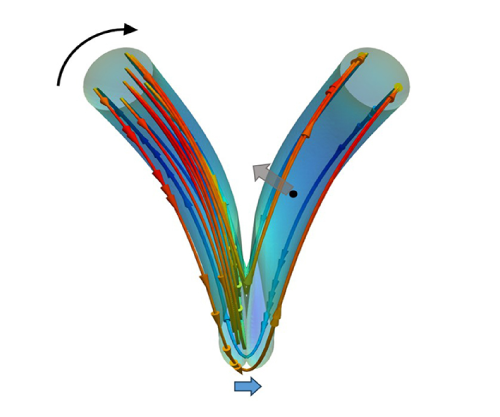No CrossRef data available.
Article contents
Tilting of vortex rings in the oblique collision reduces the longitudinal quadrupole and octupole modes of aerodynamic sound
Published online by Cambridge University Press: 11 July 2025
Abstract

The aerodynamic sound generated by the oblique collision of two vortex rings is featured by the asymmetric emission associated with the octupole mode, which differs from the symmetric emission associated with the quadrupole mode observed in the coaxial collision of two vortex rings. This distinctive feature of aerodynamic sound is closely related to the tilting and reconnecting of the vortex rings. While previous studies have explored the effects of reconnecting on aerodynamic sound, this study specifically addresses the impact of vortex ring tilting. We propose a novel vortex sound formula to quantitatively assess the role of tilting in aerodynamic sound generation. The proposed formula relates the far-field sound pressure to equivalent circulations and vorticity centroids by referring to Truesdell’s consistency conditions for vorticity moments. The variations of the equivalent circulations and vorticity centroids in the oblique collision of two vortex rings under different configurations are analysed based on the numerical solution of the Navier–Stokes equations in the source region. It is found that the tilting of vortex rings results in a rapid change of the equivalent circulation associated with the vorticity in the collision direction. However, the change caused by titling is almost out of phase with that caused by reconnecting and deforming. The vortex tilting significantly reduces the aerodynamic sound associated with the longitudinal quadrupole and octupole modes, which is opposite to the role of vortex reconnecting that was reported in the oblique collision of vortex rings.
JFM classification
Information
- Type
- JFM Papers
- Information
- Copyright
- © The Author(s), 2025. Published by Cambridge University Press


